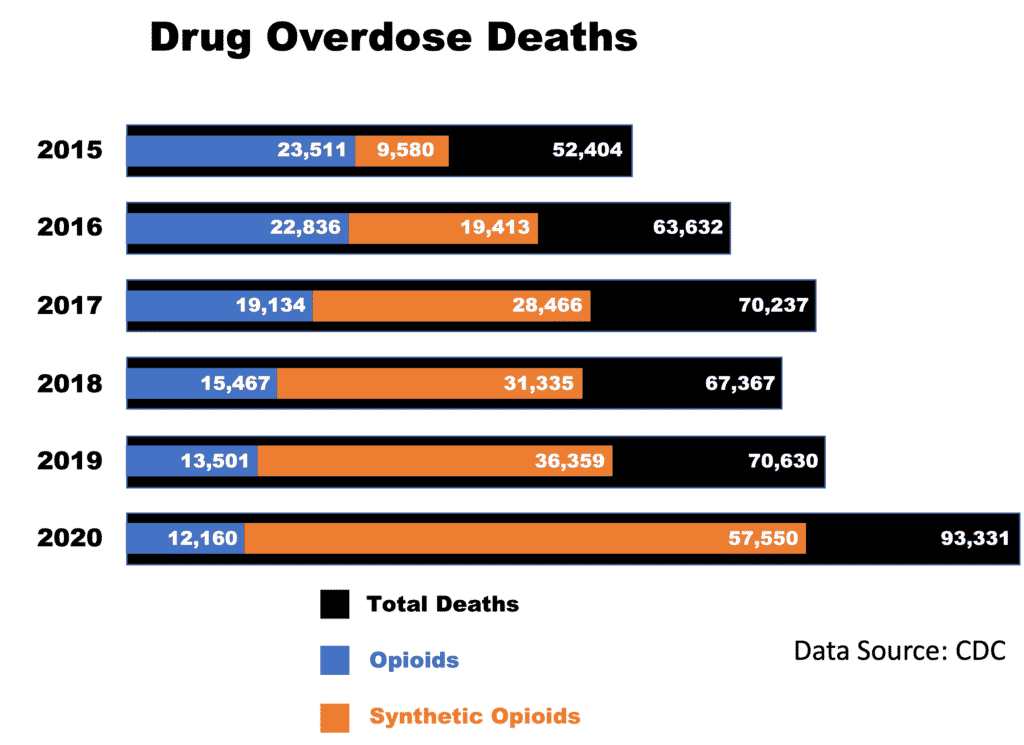CDC and DEA Cite a Growing Drug Overdose Epidemic Inside the COVID Pandemic
Record drug deaths create new and urgent challenges.
Drug deaths in 2020 concern anyone who, like me, is a bit of a data geek. The most recently released CDC and DEA data paints a picture of a persistent epidemic. Beyond that, cartels adapting their tactics shifted to counterfeit pills based on fentanyl. In light of the new data, three things jump out at me.
1. Numbers never lie: 2020 drug overdose deaths are up.
Often, we spin a story in any number of directions to suit our purpose. But numbers don’t give us that luxury. As a matter of fact, they are raw and cold indicators that don’t leave room for interpretation. As an example, the 2020 overdose death numbers tell a sobering story. This is a story of deaths reaching grim milestones as a drug epidemic rages across every region of the country.
-
- Drug deaths increased by 30% over the previous 12 months to over 93,000 between December 2019 and December 2020.
- Opioids caused 75% of total deaths.
Additionally, the numbers also hint at an accelerating trend. As indicators, drug deaths increased by 30% to 96,779 between March 2020 and March 2021.

2. Drug cartels shift to counterfeit pills
Cartels adapt. Consequently, when the pandemic closed borders, they shifted tactics to keep the business humming. As a result, they now manufacture easy-to-smuggle counterfeit pills that are largely fentanyl. According to DEA data, those pills are flooding the U.S. market, most often in the form of pills favored by teens and young adults. Subsequently, fentanyl deaths caused by these pills increased. In fact, this drug caused 3 out of 4 2020 overdose deaths. Sadly, that represents almost 50,000 lives lost to that potent synthetic opioid.
-
- Law enforcement seizures of counterfeit pills surged by 430% since 2019
- 40% of all seized counterfeit pills have a potentially fatal dose of fentanyl in them.

3. Fentanyl is the invisible opioid.
The most urgent threat to the workplace or campus is invisible. For the most part, drug program administrators continue to rely on the 5-panel urine test. But the explosive emergence of these new threats makes that a risky choice for three reasons.
-
- Like any opioid, these counterfeit pills significantly impact decision-making and motor skills.
- The urine test is easily evaded when the subject knows it is scheduled. because opioids are undetectable in urine after a few days.
- A standard 5-panel test will not detect fentanyl. As a result, a panel specifically designed to detect it must be used.
Extending the 5-panel test may be your best defense.
Both CDC and DEA data underscore that the epidemic continues. But it also warns of a shift to a particularly lethal drug. And most daunting, that drug is difficult to detect with a urine test and impossible to detect without a purpose-built screen. In response, many drug program administrators proactively add fentanyl-specific screens to their 5-panel test.
